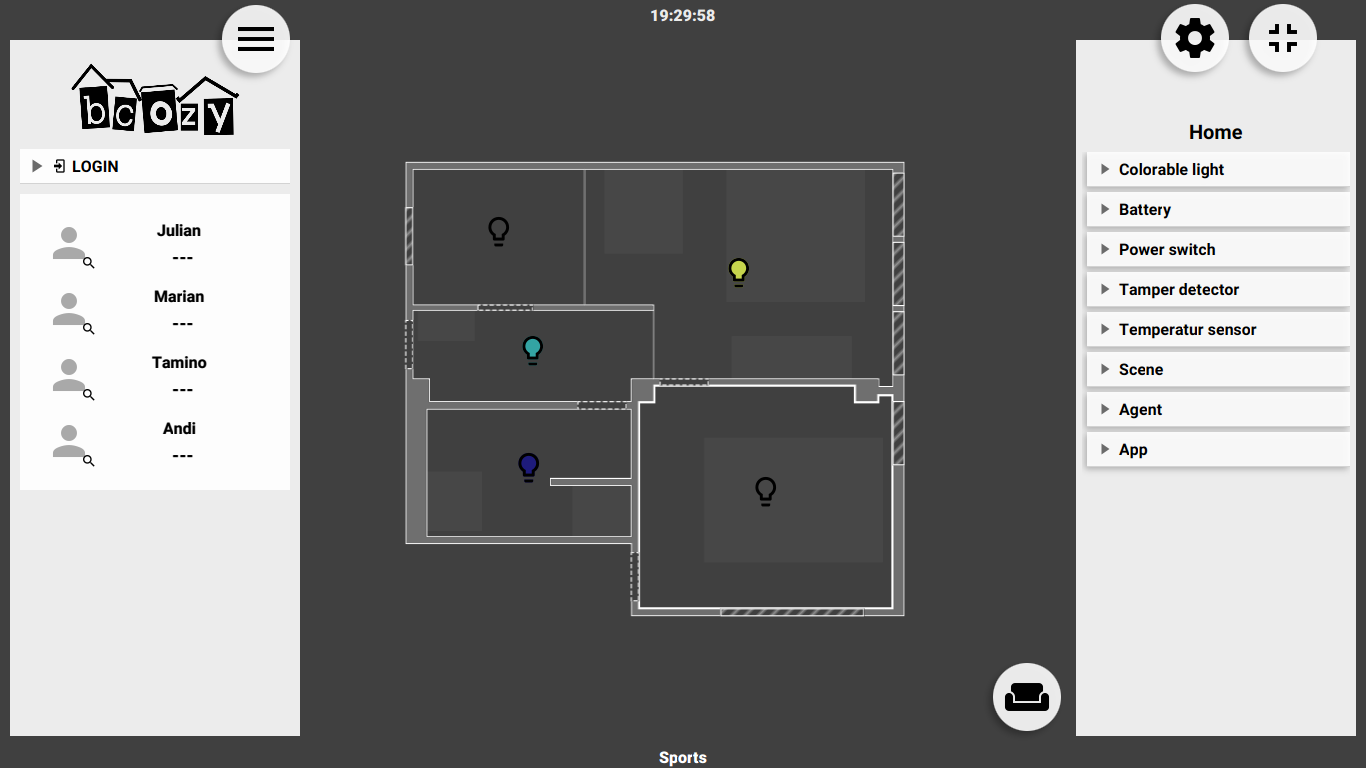How to start BCO
Provide a MQTT Broker
First of all we need at mqtt broker in your network to provide the communication between all distributed bco components.
Start BCO
You can start the bco test runtime with the following command:
bco-test
Developer Tools
Registry introspection tool which can be used to manually modify configuration, class and template entries.
bco-registry-editor
Util to print the current content of the registry
bco-print-registry
Util which prints the native rsb api of bco.
bco-print-interface-rsb
Util to query units via its [id, label, alias, location, type, scope]. Once a unit could be resolved via the given argument, its basic properties are printed. It's for example useful during development to resole an alias of an unit when only its label is known.
bco-query
bco-action-inspector
bco-visual-remote
INFO
All bco binaries are offering a help page which can be accessed via the --help argument.
Simulation Mode
You can test and prove new components in a simulated environment.
bco-test --simulate
Benchmark Mode
You can test new components via the benchmark mode to prove how your components act during massive bco system load. During the benchmark, bco will start in simulation mode and high frequenly unit state changes are generated.
WARN
Please never start the benchmark mode if you are connected to any physical devices to avoid hardware damage.
bco-test --benchmark
Control Interfaces
Desktop (JavaFX)
BCozy
